Arrangement of a sewage pumping station: how to ensure safe pumping of effluents?
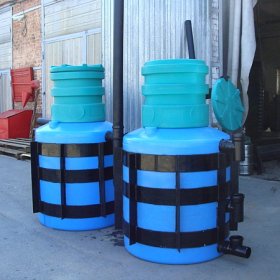
Sewer pump station (SPS) is a complex of equipment and tanks for pumping wastewater. The need to install such a station arises in cases where the transport of wastes by gravity for some reason is not possible. Here, she becomes an indispensable assistant. In this article we will consider the main structural features of the SPS, their types, as well as the features of installation work and maintenance rules.
Content
Design and internal structure of SPS
When choosing a water treatment plant, the estimated volumes of wastewater, the size of the device, the degree of pollution of the wastewater and the type of pollution are taken into account. The choice is also influenced by the relief features of the land on which the station is installed, and the depth to which the conductive pipeline is laid.
The KNS device for various purposes can vary significantly, but the main parts of the design - sealed containers and pumps - are in all models. Typically, water is drained into the reservoir by gravity, after which it is pumped out and transported to the disposal site or to the treatment plant. There are mini SPSs that connect directly to the toilets. These are aesthetically designed hermetically sealed small tanks equipped with pumps with a cutting mechanism. Such KNS models are usually installed in the bathroom.
As a rule, the KNS reservoir is a polymer tank buried in the ground. The neck of the tank is brought to the surface to facilitate routine inspection, repair and maintenance of the station. It is closed with a polymer or steel cover. Inside the tank there is a pipeline connected through pipes in the walls. The uniformity of the flow of water is ensured by the chipper, and the absence of turbulence of the flow is due to the water-breaking wall.
Sewer stations used for domestic purposes are equipped with 1-2 pumps. If the equipment is designed to drain the drains of utilities, there should be at least two pumps. Different types of pumps are installed on the pumping station for various purposes. For domestic stations, it is better to use pumps with a cutting mechanism, for communal ones - it is not recommended, since solid waste falling into the sewers can cause damage to the cutting mechanism.
Requirements for the water treatment plant, especially the installation and arrangement of the sanitary zone, the required number of pipelines are regulated by SNiP 2.04.01-85 “Internal water supply and sewerage of buildings”.
The principle of the sewer station
Regardless of the type of SPS, the principle of operation of all systems is the same.Sinks are discharged into the receiving part, which due to the dense laying of water do not leak into the ground, and under pressure are pumped forcibly into the pressure pipe. Further, the sewage flows into the distribution chamber and is transported through pipes to treatment plants. To prevent drains from returning to the pump piping, a check valve is provided. If the volume of drains increases significantly, an additional pump is switched on. If the pumps do not cope with the volume of wastewater, an alarm is triggered.
The operation of the SPS is automatically controlled. Monitoring the level of incoming waste is carried out using float sensors located at different levels, so the station operates in this mode:
- The sensors of the first level indicate a small volume of effluents, the pumps do not work.
- The second level sensors include a pump for transferring accumulated waste. The volume of wastewater is normal.
- The third level sensors are triggered when the volume of water is increased and include a backup pump to pump excess wastewater.
- The fourth level sensors turn on the alarm, because wastewater pumping devices cannot cope with their volume. In this case, the maintenance team must take measures to normalize the operation of the pumping station, since the alarm may turn on as a result of a breakdown of one of the pumps. To simplify maintenance, the pump stations are equipped with a hatch and a ladder.
When the waste transfer is completed, the level of effluents falls below the first sensor, the system shuts down. The next time you turn on, another pump is activated, which previously performed the additional function. Such a system of operation helps prevent premature wear of the mechanisms of one pump.
Additional equipment with which the sewage pumping station will be equipped:
- Backup power source;
- Pressure sensors, manometers, shutoff valves;
- Metal pavilion, ensuring system security and equipment safety;
- Equipment for cleaning pumps, connecting pipes.
The station is fully automated, however, if necessary, it can be transferred to manual control mode. Such a need usually arises during repair, the need to clean the tank, or launch a new pumping station in operation.
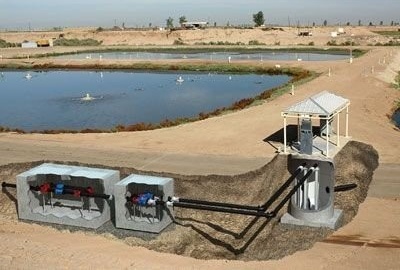
Wastewater is pumped into the pressure pipe by pumps, after which it enters the distribution chamber and is sent to the treatment plant
Types of sewage pumps and their features
Pumping equipment is the main part of the pumping station. It pumps domestic wastewater, industrial waste, sludge, storm water. There are such types of sewage pumps:
- submersible;
- cantilever;
- self-priming.
Submersible sewage pump is a pressure device that is constantly in submerged condition. Materials for the manufacture of such a pump are selected resistant to aggressive environments.
The device is convenient and takes up relatively little space, since it is constantly in a submerged state, there is no need to prepare a separate site for it and additional pipe interchange. Advantages of this type of pump:
- reliability;
- simplicity of operation;
- sparse maintenance;
- ability to work effectively at low temperatures;
- cooling by surrounding and flowing liquid;
- universality: pumps are also used for dry installation.
The cantilever sewer pump of a dry installation is the device most often used in large SPS of an industrial level. Such pumps are not mounted in modular stations. When installing them, it is necessary to prepare a separate foundation and correctly bring the pipes.
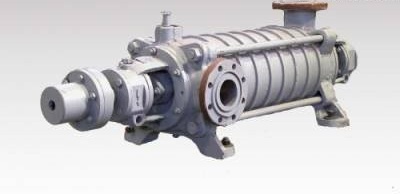
Dry-type cantilever sewage pumps require a separate foundation, are used in large industrial-level pumping stations
The commissioning of such a pump is best entrusted to specialists. Console pumps are open, access to them is facilitated, which greatly simplifies repair work. Advantages of Console Pumping Devices:
- reliability;
- convenient access to the impeller, engine;
- ease of maintenance;
- the ability to change performance due to the correct selection of the electric motor and other structural elements.
The self-priming fecal pump of a dry installation is a unit used in municipal and industrial pumping stations for pumping heavily contaminated effluents.
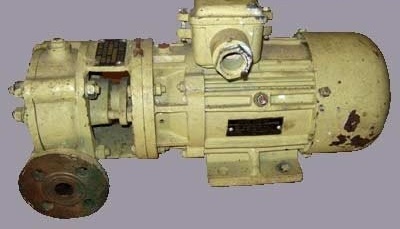
Self-priming pumps are not prone to clogging, are effective at low temperatures. The only negative is the high price
These devices are convenient to maintain due to the design of the motor with flange mounting, do not clog due to the spacious passage in the nozzle and impeller. Device Advantages:
- convenient to maintain due to the retractable design;
- little prone to clogging;
- works at low temperatures when installing a special heating element;
- pumps sewage with solid elements, sediment;
- as tight as possible thanks to a double mechanical seal;
It should also be noted that, if necessary, such a pump is easily dismantled.
Installation and maintenance of equipment
To install the pumping station, a pit is dug, the depth of which is calculated so that the lid of the tank protrudes 1 m above the ground. A sand cushion of 1.5 m is arranged under the bottom of the sealed container. Next, a tank is installed in the pit, the pipelines are connected, then the foundation pit is filled with sand and compacted in layers. . The density of the soil should correspond to 90% natural.
Then install the pumps in the tank, regulate the course of the floats. Floats of the first level should be 0.15-0.3 m above the bottom of the tank. The following floats are set 1.5 m higher than the previous ones. Next, they install electric cables, connect the power supply, equip the grounding. When checking the operation of the system and the performance of the pump, clean water from the water supply or tank is used.
Installation and connection of power supply, grounding is carried out in accordance with SP 31-110-2003 “Design and installation of electrical installations of residential and public buildings”.
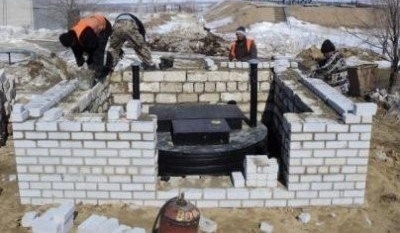
To ensure the safety of the sewage pumping station, pavilions can be equipped - metal, concrete, brick
Maintenance of the pump station is carried out in the following order:
- Visual inspection of valves, pumps, checking the performance of the control panel. If there are indicators of abnormal operation of the pump, extraneous noise or vibration, the unit is removed from the tank, inspected, washed and checked.
- Pumps and station housings are cleaned with clean water from a hose using brushes without the use of detergents. When cleaning, it is important to prevent water from getting under pressure on the control panel, pressure gauges.
- Dismantling of pumps for inspection, subsequent installation. When installing the units, it is necessary to ensure that they are fixed on the automatic pipe coupling.
- Maintenance involves checking the condition and cleaning the trash bin.
- Maintenance includes replacement of worn parts, tightening fasteners with wrenches.
When repairing the pump station, maintenance personnel must adhere to safety regulations and use protective measures. Dismantling of pumps should be carried out only after complete cooling of the unit; disconnect it from the system and relieve pressure.
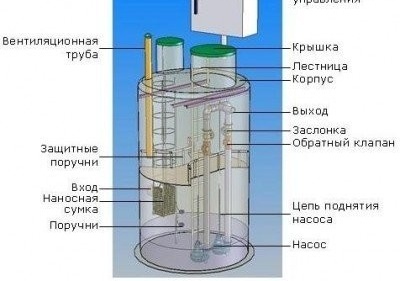
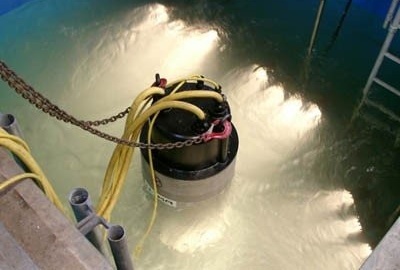

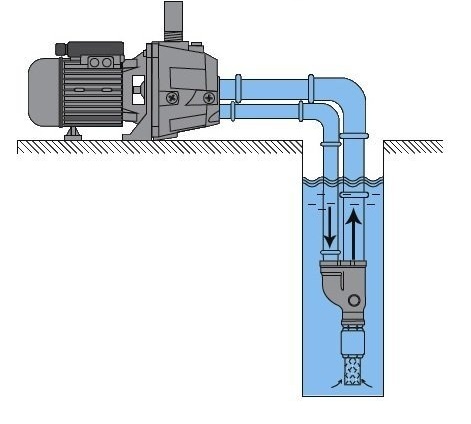
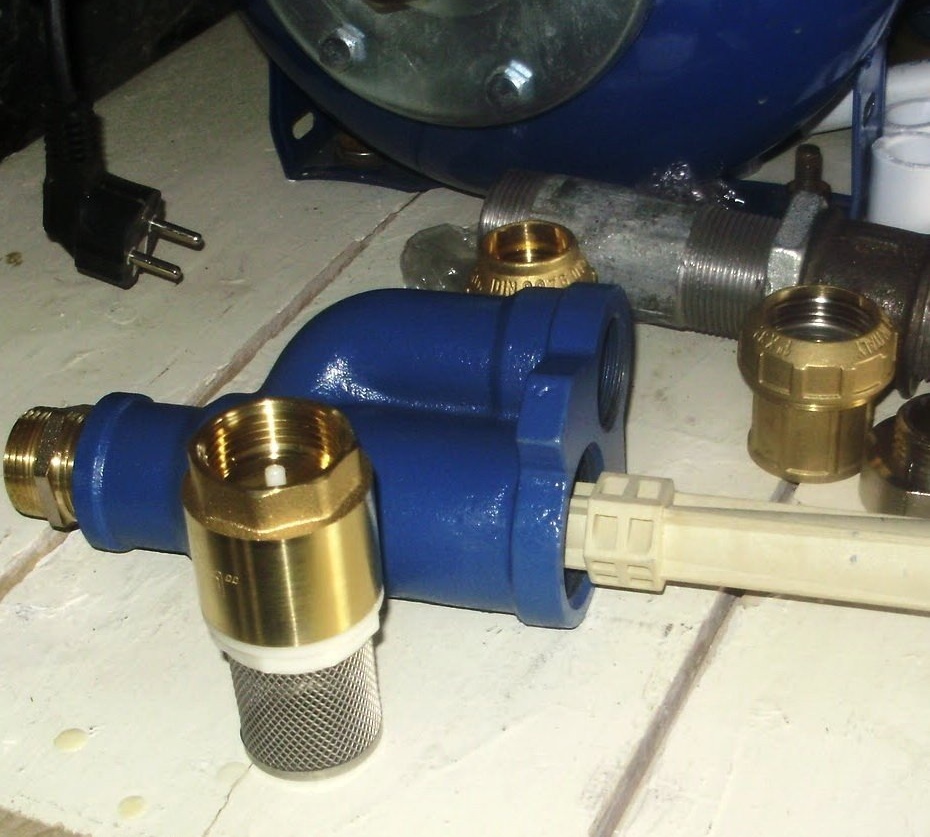
1 comment